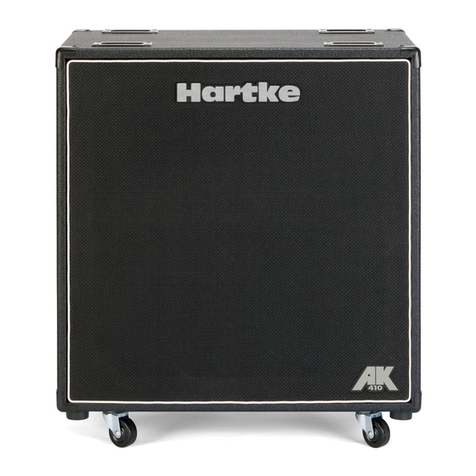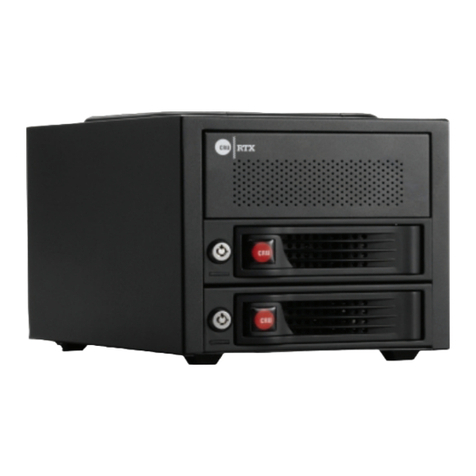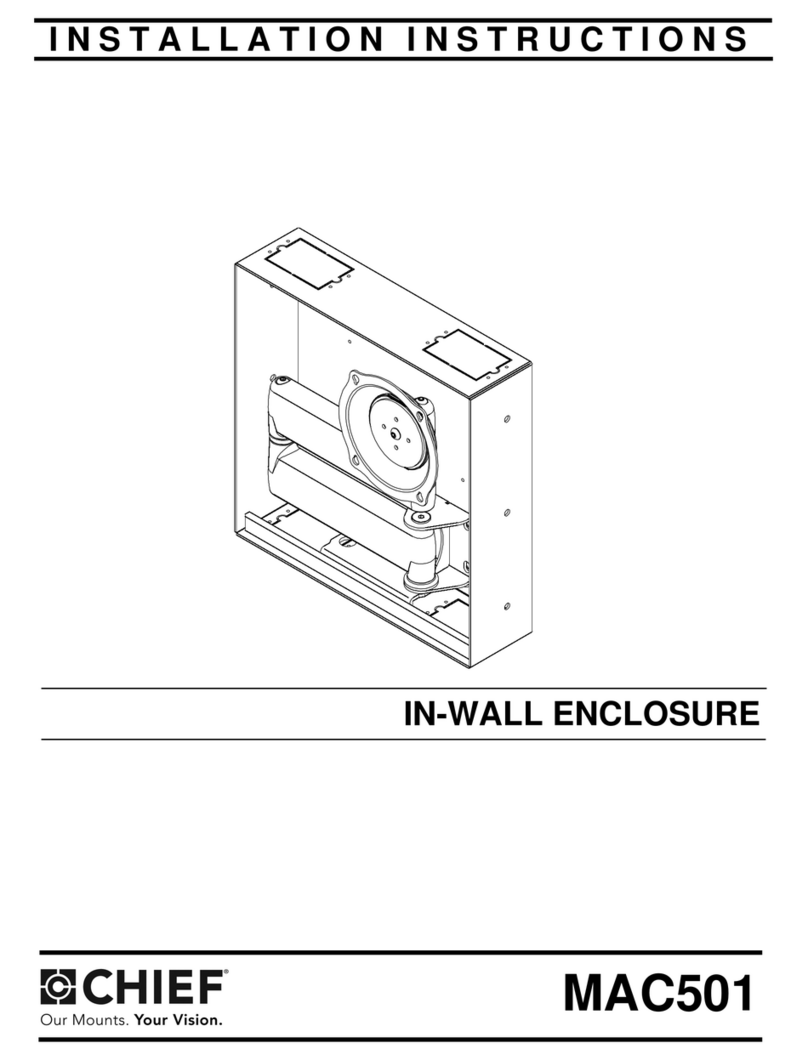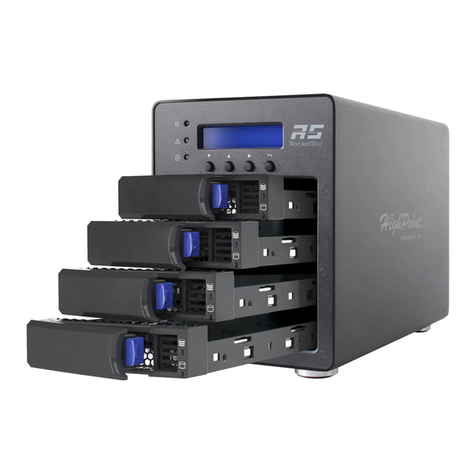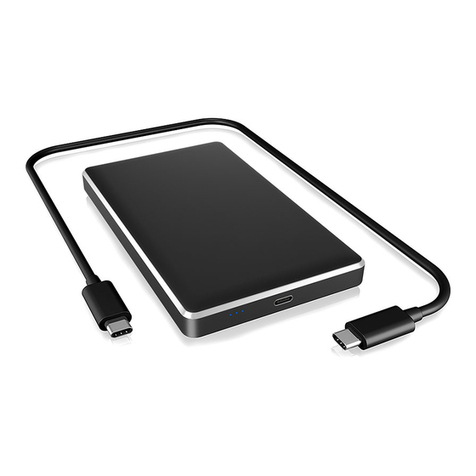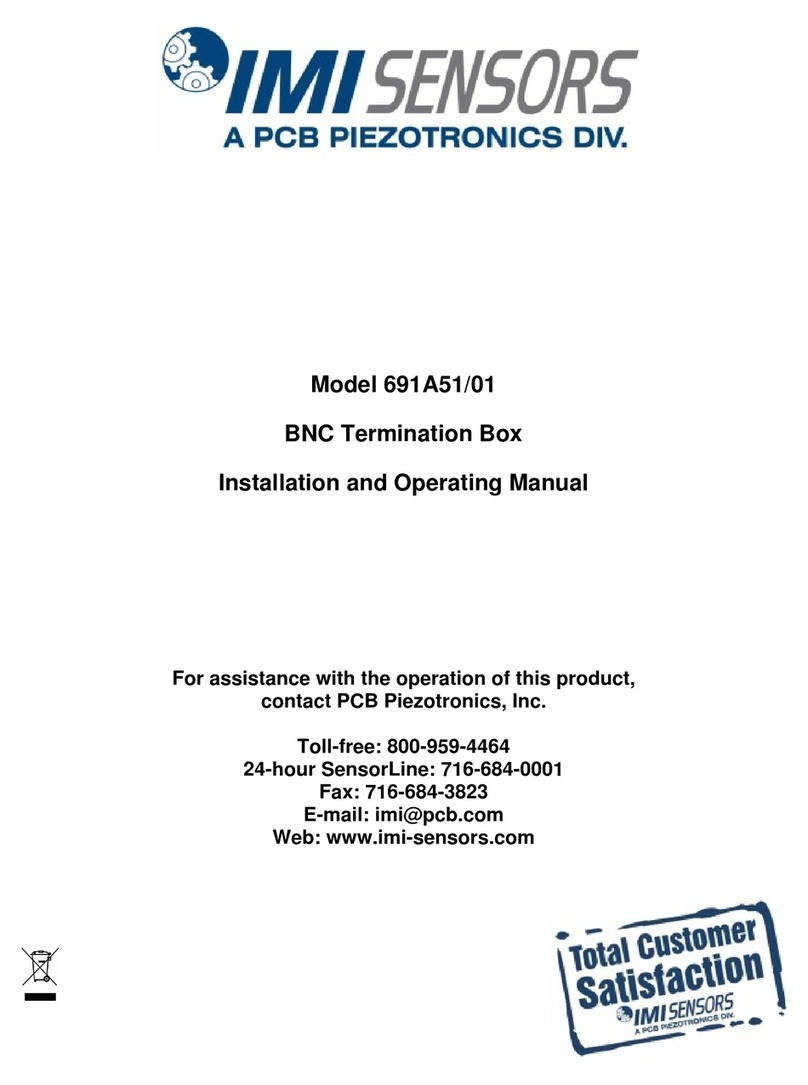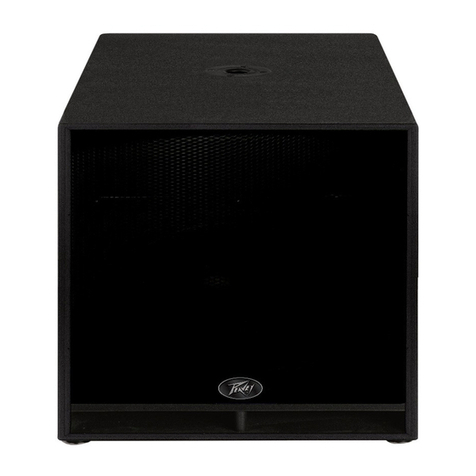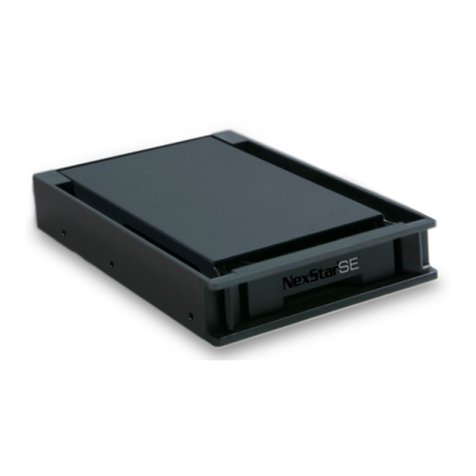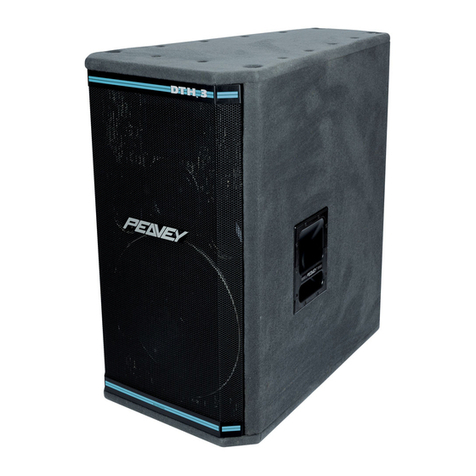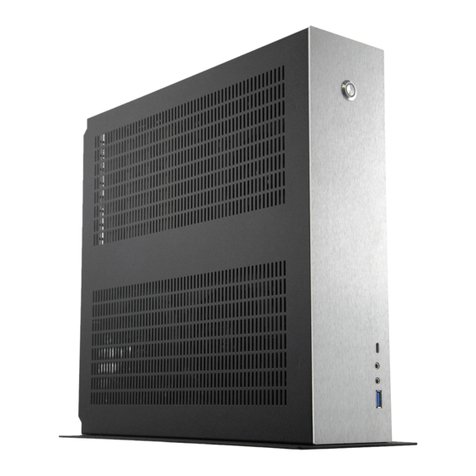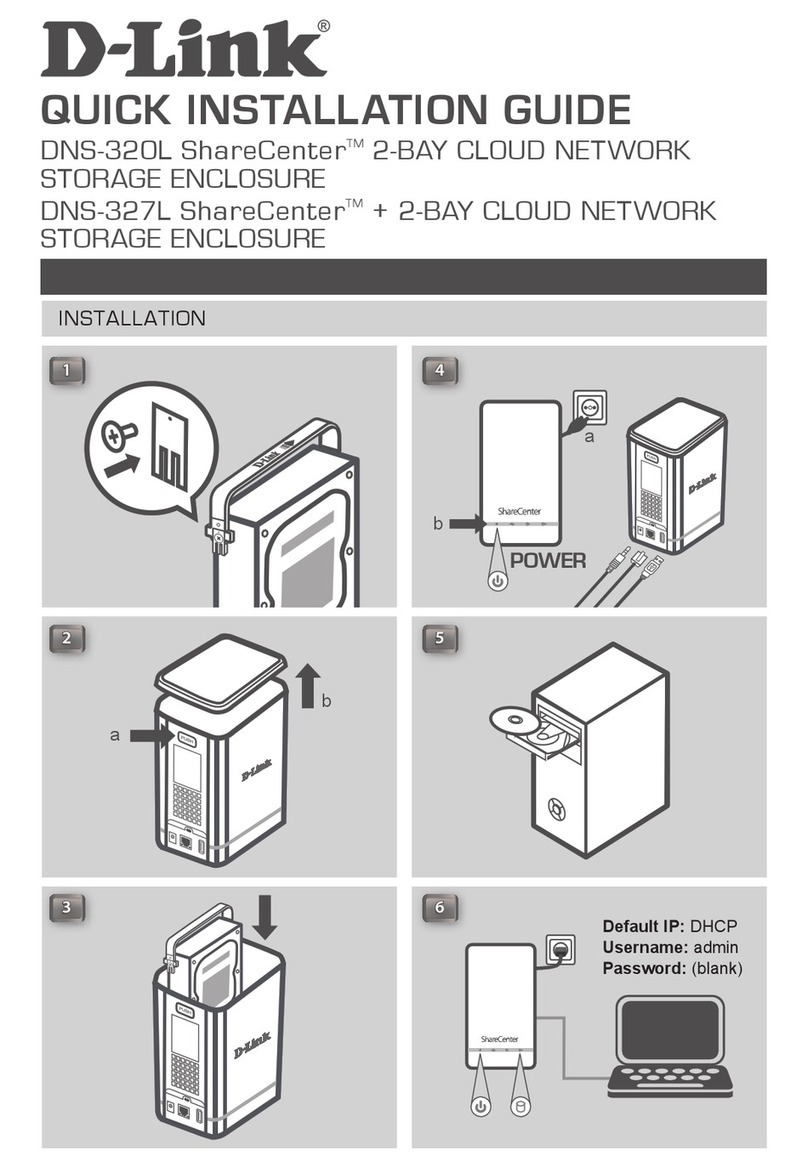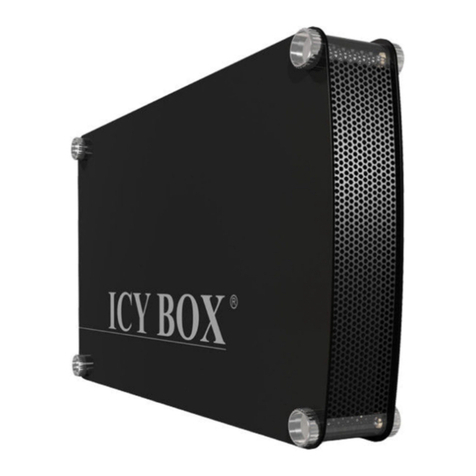Studio Technologies M380 User manual

Copyright © 2016 by Studio Technologies, Inc., all rights reserved
www.studio-tech.com
50625-0916, Issue 1
User Guide
Issue 1, September 2016
This User Guide is applicable for serial numbers
M380-00151 and later with application firmware 1.3 and later
and Dante firmware 2.0 (Ultimo 3.10.1.12) and later
Model 380 On-Air Beltpack

This page intentionally left blank.

Model 380 User Guide Issue 1, September 2016
Studio Technologies, Inc. Page 3
Table of Contents
Revision History ............................................................ 4
Introduction ................................................................... 5
Getting Started .............................................................. 8
Operation ...................................................................... 14
Technical Notes ............................................................. 17
Specifications ................................................................ 20
Appendix A: Model 380 Block Diagram ....................... 21

Issue 1, September 2016 Model 380 User Guide
Page 4 Studio Technologies, Inc.
Revision History
Issue 1, September 2016:
1. Initial release.

Model 380 User Guide Issue 1, September 2016
Studio Technologies, Inc. Page 5
Introduction
The Model 380 On-Air Beltpack offers a
unique combination of audio resources,
providing main and talkback outputs,
talent cue (IFB) input capabilities, and
essential user controls in a compact,
portable package. Optimized for broad-
cast sports and live entertainment events,
news-gathering, and streaming broadcast
applications, the unit allows incredibly
simple deployment while maintaining
“pro” audio quality and an intuitive user
experience. The Model 380 integrates di-
rectly into both Dante audio-over-Ethernet
and standard analog audio environments.
With just a Power-over-Ethernet (PoE)
connection, a dynamic microphone, and
a pair of headphones or an earpiece, a
complete broadcast “stand-up” on-air
position can be created. And by using the
Model 380’s microphone output a direct
connection to an analog microphone-level
input on an associated camera, camcord-
er, or audio console is also supported. Key
features can be easily configured includ-
ing microphone preamplifier gain, talk-
back button operation, headphone signal
routing, and sidetone operation.
The Model 380’s audio quality is excellent,
with low distortion, low noise, and high
headroom. Careful circuit design and rug-
ged components ensure long, reliable op-
eration. A wide range of applications can
be supported, including sports and enter-
tainment TV and radio events, streaming
broadcasts, corporate and government AV
installations, and post-production facili-
ties. By providing the main (on-air) audio
signal in two forms, Dante digital audio
and analog microphone level, the Model
380 makes integration into a wide range
of environments easy to accomplish. And
with the talkback audio available as a
Dante output channel, routing it to inputs
on a variety of devices, such as matrix
intercom systems, audio consoles, and
monitor loudspeaker systems, is simple
and flexible.
Applications
The Model 380 on its own can provide
an “all-Dante” solution for one on-air talent
location. Two Dante audio input channels
supply the user with their talent cue (IFB)
signals. Should the cue signal be “mix-
minus” an integrated sidetone function
can provide the user with a microphone
Figure 1. Model 380 On-Air Beltpack top and bottom views

Issue 1, September 2016 Model 380 User Guide
Page 6 Studio Technologies, Inc.
confidence signal. Two Dante audio
output channels, one designated as main
(for on-air) and the other talkback, are
routed via an associated local-area net-
work (LAN) to inputs on Dante-compatible
devices. A pushbutton switch, located
on the Model 380’s top panel, provides a
combination talkback and “cough” (user-
controlled audio mute) function. When
talkback is not active audio from the out-
put of the unit’s microphone preamplifier
is routed to the Dante main output chan-
nel; the Dante talkback output channel
is muted. When the talkback function
is active audio is muted on the Dante
main output channel and activated on
the Dante talkback output channel. The
audio switching is performed in the digital
domain and is virtually “click-free.”
Other applications may benefit from not
utilizing the Model 380’s Dante main out-
put channel. This typically won’t be an
issue of inadequate audio quality but
rather a need to match work-flow require-
ments. For example, for lip-sync or trans-
mission purposes it may be optimal to
have the on-air audio transported as an
embedded signal along with the associ-
ated camera video. Alternately, all on-air
audio sources may need to connect to
inputs on an audio console or console-
related I/O unit. Supporting these sce-
narios is not a problem as the Model 380
supplies a microphone output connec-
tion that’s specifically intended for this
purpose. Simply connect the unit’s micro-
phone output connection to the desired
analog input, such as the mic/line input
on an ENG-style camera—that’s it!
The circuitry associated with the Model
380’s microphone output is very simple,
essentially a passive path that routes a
signal connected to the microphone input
connector directly to the microphone
output connector. A solid-state circuit,
in series with the mic in-to-mic out path,
allows muting of the signal on the micro-
phone output connector whenever the
talkback function is active. And it’s impor-
tant to note that using the microphone
output connection doesn’t impact the
normal functioning of the Dante main and
talkback output channels. This can be
valuable, such as when utilizing the Dante
main output channel as a back-up, sec-
ondary, or redundant on-air audio signal.
Setup and Operation
Set up and operation of the Model 380 is
simple. An etherCON® RJ45 jack is used
to interconnect with a standard twisted-
pair Ethernet port associated with a PoE-
enabled network switch. This connection
provides both power and bidirectional
digital audio. A handheld (“stick”) micro-
phone or broadcast stereo or monaural
headset with a dynamic microphone can
be directly connected to the unit’s 3-pin
XLR input connector. Stereo headphones,
the headphone connections from a stereo
or monaural headset, or even a monaural
earpiece are connected to the phones
output jack.
Three “push-in/push-out” rotary level
controls make it easy to set the level of
the talent cue (“IFB”) and sidetone levels
being sent to the 2-channel headphone
output. The Model 380’s enclosure is
made from an aluminum alloy which offers
both light weight and ruggedness. A stain-
less steel “belt clip,” located on the back
of the unit, allows direct attachment to a
user’s clothing.

Model 380 User Guide Issue 1, September 2016
Studio Technologies, Inc. Page 7
Dante Audio-over-Ethernet
Audio data is sent to and received from
the Model 380 using the Dante audio-over-
Ethernet media networking technology. As
a Dante-compliant device, the Model 380’s
two output (Dante transmitter) and two
input (Dante receiver) audio channels
can be assigned to other devices (routed)
using the Dante Controller software appli-
cation. The Dante transmitter and receiver
channels are limited to supporting four
Dante flows, two in each direction. The
digital audio’s bit depth is up to 24 with
a sampling rate of 44.1 or 48 kHz. Two
bi-color LEDs provide an indication of
the Dante connection status.
Audio Quality
The Model 380’s performance is com-
pletely “pro” with capabilities not expected
in something of such diminutive propor-
tions. A low-noise, wide dynamic-range
microphone preamplifier and associated
voltage-controller-amplifier (VCA) dynamics
controller (compressor) ensures that mic
input audio quality is preserved while
minimizing the chance of signal overload.
The output of the microphone preamp
and compressor is routed to an analog-to-
digital conversion (ADC) section that sup-
ports sampling rates of 44.1 and 48 kHz
with a bit depth of up to 24. The audio
signal, now in the digital domain, routes
through the processor and on to the Dante
interface section where it is packetized and
prepared for transport over Ethernet.
Audio input signals arrive via the Dante
receiver channels and pass into the Model
380’s processor. The sampling rate will be
44.1 or 48 kHz with a bit depth of up to 24.
Channel routing, headphone level control,
and sidetone creation are performed within
the digital domain. This provides flexibil-
ity, allows precise control, and keeps the
three level potentiometers (two for audio
inputs and one for sidetone) from having
to directly handle analog audio signals.
The two audio channels destined for
the phones outputs are sent to a high-
performance digital-to-analog converter
and then on to robust driver circuitry. High
signal levels can be provided to a variety
of headsets, headphones, and earpieces.
Configuration Flexibility
Several configuration choices are avail-
able, allowing the Model 380 to meet the
needs of specific applications and user
preferences. Five DIP switches, located
under the belt clip, facilitate selection of
key parameters including microphone
preamplifier gain, audio routing to the
headphone output, talkback button mode,
and sidetone operation. Two of the DIP
switches are used to select the gain of
the microphone preamplifier from among
four choices. This allows the Model 380
to match the output sensitivity of a range
of handheld and headset-associated
microphones. In the dual-channel mode
the two input audio sources will be routed
independently to the left and right head-
phone output channels while sidetone will
be sent to both left and right. In the mono
mode the two input audio sources, along
with sidetone, will be combined and sent
to only the left headphone output chan-
nel. These choices allow support for a
dual-channel (two independent channels
of talent cueing (IFB)) or a single-channel
monaural listening experience.
The pushbutton switch, located on the
Model 380’s top panel, can be configured
to operate in either a momentary or latch-
ing mode. While the functional differences

Issue 1, September 2016 Model 380 User Guide
Page 8 Studio Technologies, Inc.
are somewhat subtle, the two modes al-
low distinct applications to be supported.
In the momentary mode the button can
provide a combination talkback function.
This would be applicable for on-air sports
applications where the microphone signal
typically remains active. In the latching
mode the button could be considered
as serving as a microphone-on/off con-
trol. This would be useful in applications
where talent requires local control of their
microphone on and off status. The inte-
grated sidetone function can be enabled
or disabled as required. This is important
as different applications may, or may not,
provide “mix-minus” talent cue signals.
In the case where no mix-minus signal is
present, providing a Model 380 user with
sidetone is an important means of con-
firming their local microphone audio.
Ethernet Data and PoE
The Model 380 connects to an Ethernet
data network using a standard 100 Mb/s
twisted-pair Ethernet interface. The physi-
cal interconnection is made by way of a
Neutrik® etherCON RJ45 connector. While
compatible with standard RJ45 plugs,
etherCON allows a ruggedized and lock-
ing interconnection for harsh or high-
reliability environments. An LED displays
the status of the network connection.
The Model 380’s operating power is
provided by way of the Ethernet interface
using the 802.3af Power-over-Ethernet
(PoE) standard. This allows fast and ef-
ficient interconnection with the associated
data network. To support PoE power man-
agement, the Model 380’s PoE interface
reports to the power sourcing equipment
(PSE) that it’s a class 1 (very low power)
device. If a PoE-enabled Ethernet port
can’t be provided by the associated Ether-
net switch a low-cost PoE midspan power
injector can be utilized.
Future Capabilities and
Firmware Updating
The Model 380 was designed so that its
capabilities and performance can be en-
hanced in the future. A USB connector,
located on the unit’s main circuit board
(underneath the unit’s cover), allows the
application firmware (embedded software)
to be updated using a USB flash drive.
The Model 380 uses Audinate’s Ultimo™
integrated circuit to implement the Dante
interface. The firmware in this integrated
circuit can be updated via the Ethernet
connection, helping to ensure that its
capabilities remain up to date.
Getting Started
What’s Included
Included in the shipping carton are a
Model 380 On-Air Beltpack and a printed
copy of this guide. As a device that is
Power-over-Ethernet (PoE) powered,
no external power source is provided.
Should a PoE midspan power injector be
required it must be purchased separately.
Connections
In this section signal interconnections
will be made using the four connectors
located on the bottom of the Model 380’s
enclosure. An Ethernet data connection
with Power-over-Ethernet (PoE) capability
will be made using either a standard RJ45
patch cable or an etherCON protected
RJ45 plug. A microphone will be connected

Model 380 User Guide Issue 1, September 2016
Studio Technologies, Inc. Page 9
using a cable-mounted 3-pin male XLR
connector. A set of headphones or an
earpiece will be connected by way of
a ¼-inch 2- or 3-conductor plug. And,
depending on the application, the Model
380’s microphone-level output may be
interfaced with other equipment using
a cable terminated with a standard 3-pin
female XLR connector.
Ethernet Connection with PoE
A 100BASE-TX Ethernet connection that
supports Power-over-Ethernet (PoE) is
required for Model 380 operation. This one
connection will provide both the Ethernet
data interface and power for the Model
380’s circuitry. A 10BASE-T connection is
not sufficient and a 1000BASE-T (“GigE”)
connection is not supported unless it can
automatically “fall back” to 100BASE-TX
operation. The Model 380 supports Ether-
net switch power management, enumerat-
ing itself as a PoE class 1 device.
The Ethernet connection is made by way
of a Neutrik etherCON protected RJ45
connector that is located on the bottom
of the Model 380’s enclosure. This allows
connection by way of a cable-mounted
etherCON connector or a standard RJ45
plug. The Model 380’s Ethernet interface
supports auto MDI/MDI-X so that a “cross-
over” or “reversing” cable will never be
required.
Ethernet Connection without PoE
As previously discussed in this guide,
the Model 380 was designed such that
the Ethernet connection will provide both
data and Power-over-Ethernet (PoE)
power. There may be situations where the
associated Ethernet switch does not pro-
vide PoE power. In such cases an external
PoE midspan power injector can be used.
If the selected midspan power injector is
802.3af-compatible it should function cor-
rectly. Midspan units are available from a
variety of sources, including many online
retailers.
Microphone Input
The Model 380 provides a 3-pin female
XLR connector that allows a balanced
dynamic microphone to be connected.
The microphone can be a stand-alone
handheld (“stick”) type or can be part of a
broadcast-style headset. The Model 380’s
microphone input is directly compatible
with balanced dynamic microphones. A
microphone should be connected such
that pin 1 is common, pin 2 is signal high
(+), and pin 3 is sign low (–).
It’s possible to connect a microphone
that requires P12 or P48 phantom power
for operation. In this case power must be
provided externally by way of a compat-
ible signal connection made to the Model
380’s microphone output connector. It’s
expected that the microphone output
connector would interface with the mi-
crophone input on a broadcast camera,
audio console, microphone mixer, or simi-
lar equipment. Inputs on these devices
would typically offer phantom power and
they should be enabled. Phantom power
present on the Model 380’s microphone
output will “pass through” to the Model
380’s microphone input and then on to the
connected microphone. The Model 380’s
microphone input circuitry will not be dam-
aged by the presence of phantom power.
It will still function properly, offering the
same performance as if a dynamic micro-
phone was connected to the Model 380’s
microphone input.

Issue 1, September 2016 Model 380 User Guide
Page 10 Studio Technologies, Inc.
Headphone Output
The Model 380 provides a 2-channel head-
phone output by way of a 3-conductor
¼-inch phone jack. Devices such as stereo
headphones or stereo (“dual-muff”) broad-
cast-style headsets can be directly con-
nected using a 3-conductor ¼-inch plug.
Following the usual convention the left
channel should be terminated on the tip
lead, the right channel on the ring lead,
and common on the sleeve lead.
It’s also possible to use a monaural (“single-
muff”) headset or broadcast-type single
earbud but some care must be taken. If
a 3-conductor ¼-inch plug is used by the
device it should be wired to the tip and
sleeve leads; the plug’s ring lead should
be left unconnected. But it’s also very likely
that the monaural device will be terminated
on a 2-conductor (“tip and sleeve”) plug.
When the plug is inserted into the Model
380’s headphone jack the Model 380’s right
headphone output channel will be shorted;
the ring lead will be directly shorted to the
sleeve lead. This can lead to stress on the
right channel headphone output circuitry
as well as extra current draw. To prevent
this condition the headphone output mode
configuration choice (DIP switch 3) should
be set for monaural. This disables the right
headphone output channel and sends the
listen audio sources only to the left output
channel. Refer to the Configuration section
later in this guide for details on setting the
headphone audio routing.
Microphone Output
A 3-pin male XLR connector provides a
microphone-level output that’s directly
related to the microphone input. Techni-
cally the output is identical to the signal
that’s connected to the microphone input
but with a solid-state muting circuit in series
with the interconnection. When the Model
380’s Dante main output channel is active
the microphone signal passes through
to the Model 380’s microphone output.
When the main output channel is muted
(and the Dante talkback channel is ac-
tive) the microphone signal does not pass
through to the microphone output; it’s is
muted in an essentially click-free manner.
Refer to Appendix A, located at the end
of the guide, for a block diagram of the
microphone input and microphone output
circuitry. Studying this diagram can help
illuminate one of the more unique Model
380 features.
The microphone output can be connected
to a balanced (differential) analog micro-
phone-level input on a variety of devices.
When the Model 380 was designed the
primary target devices were portable
ENG-style video cameras that included
microphone inputs. The mic inputs on
these cameras are typically amplified and
then embedded with the video signal into
an SDI output. This would ensure that
“lip sync” would be maintained since the
audio and video would travel on the same
digital stream. The Model 380’s Dante
main output channel would not be used or
would only be used as a backup path. The
microphone output can also be connected
to mic inputs on audio consoles or to con-
sole remote I/O interfaces, e.g., Calrec®
Hydra2®.
No preamplifier or other active circuitry
impacts the path from the Model 380’s
microphone input connector to the Model
380’s microphone output connector. The
signal does pass through a 200 ohm resis-
tor in each “leg” (pin 2 and pin 3) along
with connecting to a solid-state relay
contact. The result is that the source

Model 380 User Guide Issue 1, September 2016
Studio Technologies, Inc. Page 11
impedance of a connected microphone
will be 400 ohms greater when presented
to the microphone output. This will slightly
raise the theoretical noise floor of the
microphone signal vis-a-vis the micro-
phone output but shouldn’t have any
impact on real-world applications.
As previously discussed, if the connected
microphone requires P12 or P48 phantom
power it must be provided by way of a
connection made to the Model 380’s
microphone output connector. The phan-
tom power will “pass through” to the
Model 380’s microphone input connector
and on to a connected microphone. The
state of the muting circuitry (muted or
not muted) will not impact the phantom
power source. The series resistance
(approximately 200 ohms in each leg
of the balanced signal) should also not
impact the phantom power being provided
to a connected microphone.
Dante Configuration
For audio to pass to and from the Model
380 requires that several Dante-related
parameters be configured. These configu-
ration settings will be stored in non-volatile
memory within the Model 380’s circuitry.
Configuration will typically be done with
the Dante Controller software application
which is available for download free of
charge at www.audinate.com. Versions
of Dante Controller are available to sup-
port Windows® and OS X® operating
systems. The Model 380 uses the Ultimo
2-input/2-output integrated circuit to imple-
ment the Dante architecture.
The two Dante transmitter (Tx) channels
associated with the Model 380’s Dante
interface must be assigned to the desired
receiver channels. This achieves routing
the Model 380’s two output audio chan-
nels to the device (or devices) that will
be “listening” to them. Within Dante
Controller a “subscription” is the term
used for routing a transmitter flow (a
group of output channels) to a receiver
flow (a group of input channels). The
number of transmitter flows associated
with an Ultimo integrated circuit is limited
to two. These can either be unicast,
multicast, or a combination of the two.
If the Model 380’s transmitter channels
need to be routed to more than two flows
it’s possible that an intermediary device,
such as a rack-mounted digital signal
processor unit with more available flows,
can be used to “repeat” the signals.
The two Dante receiver (Rx) channels
associated with the Model 380’s audio
inputs also need to be routed to the de-
sired Dante transmitter channels. These
two audio signals will be sent to the Model
380’s 2-channel headphone output.
The Model 380 supports audio sample
rates of 44.1 and 48 kHz with a limited
selection of pull-up/pull-down values
available. In most cases the default will
be used and a pull-up or pull-down rate
will not be selected. The Model 380 can
serve as the clock master for a Dante
network but in most cases it will be config-
ured to “sync” to another device.
The Model 380 has a default Dante device
name of ST-M380 and a unique suffix.
The suffix identifies the specific Model 380
that is being configured. The suffix’s actual
alpha and/or numeric characters relate to
the MAC address of the unit’s Ultimo inte-
grated circuit. The two Dante transmitter

Issue 1, September 2016 Model 380 User Guide
Page 12 Studio Technologies, Inc.
(Tx) channels have default names of
Main and Talkback. The two Dante re-
ceiver (Rx) channels have default names
of Headphone Ch1 and Headphone Ch2.
Using Dante Controller the default device
name and channel names can be revised
as appropriate for the specific application.
Model 380 Configuration
The Model 380 provides five DIP switches
which are used to configure four operat-
ing functions. These allow the unit to be
optimized to match the needs of specific
applications. Two of the switches allow the
gain of the microphone preamplifier to be
adjusted. One switch selects how incom-
ing audio and sidetone audio are routed to
the headphone output channels. The fourth
switch selects the mode of the talkback
button. The fifth switch selects the on/off
status of the sidetone function. Physically
the switches are accessible from the back
of the Model 380’s enclosure through a
rectangular opening that is located under
the top of the belt clip.
The DIP switches are connected to the
Model 380’s logic circuitry which responds
to changes by way of the application firm-
ware; no audio passes directly through the
switches. Changes made to a DIP switch
will immediately be reflected in the unit’s
operation.
Accessing the Configuration Switches
To access the five configuration DIP switch-
es requires that the belt clip be rotated.
Normally the belt clip is secured to the
back of the enclosure using one rivet (non-
removable) and one machine screw that
has a thread pitch of 6-32. To allow the belt
clip to rotate, remove the machine screw
using a #1 Phillips head screw driver. The
belt clip should now be able to rotate in
either direction. Save the screw so that it
can be re-installed once the desired con-
figuration choices have been made. Note
that the threaded fastener within the back
of the Model 380’s chassis has an internal
locking mechanism (a plastic bushing)
that prevents the belt clip’s 6-32 machine
screw from vibrating loose. So no addi-
tional method of thread locking, such as
a lock washer or chemical compound, is
necessary.
Microphone Preamp Gain
Switches SW1 and SW2 allow the gain of
the Model 380’s microphone preamplifier
to be selected. When SW1 and SW2 are
in their down (off) position 35 dB of gain is
selected. Placing SW1 to its up (on) posi-
tion while leaving SW2 in its down (off)
position selects the 43 dB gain setting.
Leaving SW1 to its down (off) position
while placing SW2 in its up (on) position
selects the 52 dB gain setting. Placing
SW1 and SW2 to their up (on) positions
selects the gain to be 59 dB.
Figure 2. Microphone preamplifier gain
configuration switches

Model 380 User Guide Issue 1, September 2016
Studio Technologies, Inc. Page 13
The compressor active LED, visible on
the bottom of the Model 380’s enclosure
adjacent to the headset connector, can act
as a guide when setting the preamp gain.
During normal talk operation the compres-
sor active LED should light intermittently.
If, for example, it rarely lights and the gain
is set to 43 dB, it might be a good idea to
change to setting to 52 dB. If the LED is
lit fully during normal talking and the gain
is set for 52 or 59 dB, changing it to one
of the lower values might be warranted.
There’s no “hard and fast” rule about
which gain setting is appropriate. But
unless otherwise indicated, 43 dB is
typically a good initial choice.
Headphone Output Mode
Switch SW3 is used to configure how the
audio signals are routed to the 2-channel
headphone output. In the dual-channel
mode channel 1 of the Dante audio input
is routed to the left channel of the head-
phone output. Channel 2 of the Dante
audio input is routed to the right channel
of the headphone output. And sidetone,
if enabled, is sent to both the left and
right headphone output channels. In the
monaural mode Dante channels 1 and
2 and sidetone audio are combined and
sent to the left headphone output channel;
no signal is sent to the right headphone
output. This mode is specifically provided
when a 2-conductor ¼-inch plug is insert-
ed into the Model 380’s headphone output
connector. This prevents potential stress
on the right channel headphone output
circuit when it is presented with a short
circuit condition.
Talkback Button Mode
Switch SW4 is used to configure the
talkback button mode to be either mo-
mentary or latching. In the momentary
mode the Dante main output channel and
microphone output will be active and the
button’s green LED will be lit. When the
button is pressed and held the LED will
turn orange, the Dante main output chan-
nel and microphone output will mute, and
the Dante talkback output channel will be-
come active. When the button is released
the function will return to the original state.
When selected for the latching mode tap-
ping (momentarily pressing) the button
will cause the function to change states,
moving between the Dante main output
channel and microphone output being
active and the Dante talkback output
channel being active.
Figure 4. Talkback button mode configuration
switch
Figure 3. Headphone output mode configuration
switch

Issue 1, September 2016 Model 380 User Guide
Page 14 Studio Technologies, Inc.
Sidetone
Switch SW5 allows the sidetone function
to be enabled or disable as desired.
Selecting the on or off mode for sidetone
will depend on the needs of the applica-
tion. If a “full mix” is being provided to the
Model 380 then locally provided sidetone
won’t need to be provided. The user will
hear themselves by way of the audio sig-
nals being routed to the Dante input audio
channels. But if a “mix-minus” is being
supplied to the Model 380 then having
sidetone enabled will be important as a
user confidence monitor.
channels (Dante transmitter channels) and
two audio input channels (Dante receiver
channels) should have been routed to
the receiver and transmitter channels
on associated equipment. The Model
380’s configuration switches should have
been set to meet the needs of the specific
application.
Initial Operation
The Model 380 will start to function as
soon as a Power-over-Ethernet (PoE)
power source is connected. However,
it may take 20 to 30 seconds for full
operation to commence. Upon initial
power up the three status LEDs located
on the bottom panel below the RJ45 jack
will begin to light as network and Dante
connections are established. The green
and orange LED backlights within the
talkback pushbutton switch will light in a
quick test sequence to indicate that the
main operating firmware (embedded soft-
ware) has started. Once the sequence has
completed and the Dante connection has
been established full operation will begin.
Ethernet and Dante Status
LEDs
Three status LEDs are located below the
etherCON RJ45 connector on the Model
380’s bottom panel. The LINK ACT LED
will light green whenever an active con-
nection to a 100 Mb/s Ethernet network
has been established. It will flash in re-
sponse to Ethernet data packet activity.
The SYS and SYNC LEDs display the
operating status of the Dante interface
and associated network. The SYS LED
will light red upon Model 380 power up
to indicate that the Dante interface is not
ready. After a short interval it will light
Operation
At this point everything should be ready
and Model 380 operation can commence.
An Ethernet connection with Power-over-
Ethernet (PoE) capability should have
been made. Alternately, a midspan power
injector, in “series” with the Ethernet con-
nection, should have been put into place.
A microphone and headphones or earbud
should have been connected. Alternately,
a broadcast-style headset should be
connected. If desired, a connection to
the microphone output should have
been made.
The Model 380’s Dante configuration
settings should have been selected using
the Dante Controller software application.
In this way the unit’s two audio output
Figure 5. Sidetone function configuration switch

Model 380 User Guide Issue 1, September 2016
Studio Technologies, Inc. Page 15
green to indicate that it is ready to pass
data with another Dante device. The SYNC
LED will light red when the Model 380 is
not synchronized with a Dante network. It
will light solid green when the Model 380
is synchronized with a Dante network and
an external clock source (timing reference)
is being received. It will slowly flash green
when the Model 380 is part of a Dante
network and is serving as a clock master.
It’s possible that up to 30 seconds may
be required for the SYNC LED to reach
its final state.
How to Identify a Specific
Model 380
The Dante Controller software applica-
tion offers an identify command that can
be used to help locate a specific Model
380. When identify is selected it will send
a command to a single Model 380 unit.
On that specific unit the talkback push-
button’s orange LED will flash on and off
approximately eight times. (The on/off
status of the button will not change.) In
addition, the SYS and SYNC status LEDs,
located directly below the etherCON RJ45
connector on the bottom panel, will slowly
flash green. After a few seconds the LED
identification pattern will cease and normal
Model 380 button LED and Dante status
LED operation will resume.
Headphone Listen Level
Three rotary potentiometers (“pots”),
located on the Model 380’s top panel,
allow adjustment of the level of the two
audio input signals and sidetone as they
are sent to the 2-channel headphone out-
put. How the pots function will depend
on how the headphone output has been
configured. In the dual-channel mode
channel 1 audio will be sent to the left
channel and channel 2 audio will be sent
to the right channel. Sidetone audio will
be sent to both the left and right head-
phone output channels. In the monaural
mode the two audio inputs and the side-
tone audio are summed (mixed) and sent
to only the left channel of the headphone
output. No signal will be present on the
right channel output.
The pots are “push-in/push-out” type
which allow their associated knobs to be
in their “out” position to be adjusted and
their “in” position when protection from an
unwanted change is desired. When a pot
is in its fully counterclockwise position the
associated audio signal is fully muted.
Users should find the headphone output
audio quality to be excellent, with high
maximum output level and low distortion.
Analog audio signals do not pass directly
through the level pots. The position of the
pots is recognized by the Model 380’s
processor which then adjusts the signal
level within the digital domain.
Compressor Active LED
A red LED indicator is located on the bot-
tom panel adjacent to the headset con-
nector. Labeled COMP, the LED displays
the status of the microphone audio com-
pressor function. It will light whenever the
input level from the microphone, along
with the configured mic preamp gain, is
such that the dynamic range of the talk
signal is being controlled. It’s perfectly ac-
ceptable for this LED to light intermittently
whenever a user is talking at a normal
voice level into the associated micro-
phone. But if the COMP LED lights solid
while a user is talking at a normal voice
level this will typically indicate that the mic

Issue 1, September 2016 Model 380 User Guide
Page 16 Studio Technologies, Inc.
gain setting should be reduced. Converse-
ly, if the COMP LED almost never lights
when normal talking is taking place, it’s
possible that changing the gain to a high-
er value would be beneficial. Note that due
to the design of the circuitry the compres-
sor active LED will function whether or not
any of the four talk channels are active.
Talkback Button
One pushbutton switch is used to select
the status of the two Dante audio output
channels and the microphone output con-
nector. Labeled TALKBACK, the button
really provides both an output mute and a
talkback enable function. When “talkback”
is active audio is no longer sent out the
Dante main output channel but instead
is routed to the Dante talkback output
channel. In this way the “on-air” channel
is muted and the talkback channel is ac-
tive. And whenever the Dante main output
channel is muted the microphone output,
provided on the 3-pin XLR connector, will
also be muted. How the talkback button
will specifically function will depend on the
configuration of the Model 380.
Momentary
When the talkback button has been
configured for momentary operation
how it functions is pretty self-explanatory.
Press and hold the button to enable the
talkback function. When talkback is en-
abled microphone audio will be sent out
the Dante talkback output channel; the
Dante main output channel and the micro-
phone output will both be muted. When
the talkback button is pressed the button’s
orange LED will light. When the talkback
button is not pressed the button’s green
LED will be lit.
Latching
If the talkback button has been configured
for the latching mode its operation is a bit
different. Momentarily pressing (“tapping”)
the button will cause the talkback func-
tion to change states: off-to-on or on-to-off.
Whenever microphone audio is being sent
out the Dante main output channel and the
microphone output is active the button’s
green LED will be lit. The button’s LED will
light orange when the talkback function is
enabled and microphone audio is being
sent out the Dante talkback output channel
while both the Dante main output channel
and microphone output are muted.
Sidetone Function
The Model 380 includes a sidetone func-
tion that sends microphone audio to the
headphone output whenever the micro-
phone audio is being sent to the Dante
main output channel and the microphone
output. Sidetone audio will never be pro-
vided when the talkback function is active.
Sidetone audio quality should be excellent
and will provide the Model 380 user with
a confidence signal that they are active or
“on-air.” A configuration choice allows the
sidetone function to be enabled or disabled
as desired for the application. In a nutshell,
if a mix-minus cue signal is being provided
to the user by way of the audio inputs then
sidetone will typically want to be enabled.
Whether sidetone audio will be sent to the
left and right headphone output channels
or only the left headphone output chan-
nel will depend on the configuration of the
headphone output. As expected, when the
Model 380 is configured for dual-channel
sidetone audio will be sent to the left and
right headphone output channels. When
configured for monaural sidetone audio will

Model 380 User Guide Issue 1, September 2016
Studio Technologies, Inc. Page 17
be sent to only the left headphone output
channel.
The level of sidetone audio being sent to
either the left and right headphone output
channels or only the left headphone out-
put channel is adjusted using the rotary
level control (“pot”) that is located on the
top of the Model 380’s enclosure. Typically
providing a precise sidetone level is not
important and most users will not be con-
cerned about setting it to a specific value.
But setting the sidetone level to something
reasonable is important. Setting the level
too low will encourage a user to speak
too loudly; setting it too high and the user
will be tempted to speak hesitantly. Audio
does not pass directly through the sidetone
pot. The pot’s position is monitored by the
Model 380’s processor which then controls
the level within the digital audio domain.
Technical Notes
IP Address Assignment
By default the Model 380’s Ethernet inter-
face will attempt to automatically obtain an
IP address and associated settings using
DHCP (Dynamic Host Configuration Proto-
col). If a DHCP server is not detected an IP
address will automatically be assigned us-
ing the link-local protocol. This protocol is
known in the Microsoft® world as Automat-
ic Private IP Addressing (APIPA). It is also
sometimes referred to as auto-IP (PIPPA).
Link-local will randomly assign a unique
IP address in the IPv4 range of 169.254.0.1
to 169.254.255.254. In this way multiple
Dante-enabled devices can be connected
together and automatically function, wheth-
er or not a DHCP server is active on the
LAN. Even two Dante-enabled devices that
are directly inter-connected using an RJ45
patch cord will, in most cases, correctly
acquire IP addresses and be able to com-
municate with each other.
An exception does arise when trying to
directly interconnect two Dante-enabled
devices that use Ultimo integrated circuits
to implement Dante. The Model 380 uses
the Ultimo “chip” and, as such, a direct
one-to-one interconnection to another
Ultimo-based product is not supported.
An Ethernet switch linking the two units is
required to successfully interconnect two
Ultimo-based devices. The technical rea-
son that a switch is required relates to the
need for a slight latency (delay) in the data
flow; an Ethernet switch will provide this.
Using the Dante Controller software ap-
plication the Model 380’s IP address and
related network parameters can be set for
a fixed (static) configuration. While this is a
more involved process than simply letting
DHCP or link-local “do their thing,” if fixed
addressing is necessary then this capabil-
ity is available. But in this case it’s highly
recommended that every unit be physically
marked, e.g., directly using a permanent
marker or “console tape,” with its specific
static IP address. If knowledge of a Model
380’s IP address has been misplaced there
is no reset button or other method to easily
restore the unit to a default IP setting.
In the unfortunate event that a device’s IP
address is “lost,” the Address Resolution
Protocol (ARP) networking command can
be used to “probe” devices on a network
for this information. For example, in Win-
dows OS the arp –a command can be
used to display a list of LAN information
that includes MAC addresses and cor-
responding IP addresses. The simplest
means of identifying an unknown IP ad-
dress is to create a “mini” LAN with a small

Issue 1, September 2016 Model 380 User Guide
Page 18 Studio Technologies, Inc.
PoE-enabled Ethernet switch connecting a
personal computer to the Model 380. Then
by using the appropriate ARP command
the required “clues” can be obtained.
Optimizing Network
Performance
For best Dante audio-over-Ethernet per-
formance a network that supports VoIP
QoS capability is recommended. This can
typically be implemented on virtually all
contemporary managed Ethernet switches.
There are even specialized switches that
are optimized for entertainment-associated
applications. Refer to the Audinate website
(www.audinate.com) for details on optimiz-
ing networks for Dante applications.
Application Firmware Version
Display
As part of the Model 380’s power-up
sequence the unit’s application firmware
(embedded software) version number can
be displayed. This is useful when working
with factory personnel on application sup-
port and troubleshooting. Before connecting
the PoE-enabled Ethernet cable, press and
hold the talkback button. Then connect the
Ethernet cable. Upon application of PoE
power the Model 380 will not go through
its normal power-up sequence but instead
will display the firmware version. The LED
associated with the talkback button will
“flash” green in color to display the major
version number and then “flash” orange to
display the minor version number. Then the
LED will remain off until the talkback but-
ton is released. Once the button has been
released normal operation will then take
place. As an example of what would be a
typical firmware display, if the talkback but-
ton’s LED “flashes” green once followed by
the LED “flashing” orange thrice it would
indicate that application firmware version
1.3 is present in the Model 380.
Application Firmware Update
Procedure
It’s possible that updated versions of the
application firmware (embedded software)
that is utilized by the Model 380’s proces-
sor (microcontroller or MCU) integrated
circuit will be released to add features or
correct issues. Refer to the Studio Tech-
nologies website for the latest application
firmware file. The unit has the ability to load
a revised file into the MCU’s non-volatile
memory by way of a USB interface. The
Model 380 implements a USB host function
that directly supports connection of a USB
flash drive. The Model 380’s MCU updates
its firmware using a file named m380.bin.
The update process begins by preparing
a USB flash drive. The flash drive doesn’t
have to be empty (blank) but must be in
the personal-computer-standard FAT32 for-
mat. Save the new firmware file in the root
directory with a name of m380.bin. Studio
Technologies will supply the application
firmware file inside a .zip archive file. While
the firmware file inside of the zip file will ad-
here to the naming convention required by
the Model 380, the name of the zip file itself
will include the file’s version number. For
example, a file named m380v1r3MCU.zip
would indicate that version 1.3 of the ap-
plication firmware (m380.bin) is contained
within this zip file.
Once the USB flash drive is inserted into
the USB interface, located on the main
circuit board under the cover, the unit
must be powered off and again powered
on. At this point the file will automatically
load. The precise steps required will be

Model 380 User Guide Issue 1, September 2016
Studio Technologies, Inc. Page 19
highlighted in the next paragraphs of
this guide. After the firmware has been
updated the LED associated with the talk-
back button should be used to confirm
that the desired application firmware
version has been successfully installed.
To install the application firmware file
follow these steps:
1. Disconnect power from the Model 380.
This will entail removing the Ethernet
connection that is providing PoE power.
2. Remove the cover from the Model 380.
Begin by removing the four Phillips
head screws (#1 screw driver tip), two
per side. Be certain to save the screws
so that re-assembly will be fast and
painless. Then carefully slide the cover
forward to separate it from the level
controls and buttons and then lift it off.
3. Locate the USB connector on the main
circuit board. It’s near the front of the
unit, directly between the channel 1 and
channel 2 rotary level controls. Insert
the prepared USB flash drive into it.
4. Apply power to the Model 380 by
connecting to a Power-over-Ethernet
(PoE) Ethernet source.
5. After a few seconds the Model 380 will
run a “boot loader” program that will
automatically load the new application
firmware file (m380.bin). This loading
process will take only a few seconds.
During this time period the talkback
button LED will flash slowly in alternate
colors. Once the entire loading process
is over, taking approximately 10 sec-
onds, the Model 380 will restart using
the newly-loaded application firmware.
6. At this time the Model 380 is function-
ing with the newly-loaded application
firmware and the USB flash drive can
be removed. But to be conservative,
remove PoE power first and then
remove the USB flash drive.
7. To confirm that the desired firmware
version has been correctly loaded,
press and hold the talkback button,
apply power to the Model 380, and
“read” the application firmware version
number by observing the button’s LED
colors. Ensure that this is the desired
version.
Note that upon power being applied to the
Model 380 if a connected USB flash drive
doesn’t have the correct file (m380.bin) in
the root folder no harm will occur. Upon
power up the talkback button’s LED will
flash on and off rapidly for a few seconds
to indicate this condition and then normal
operation using the unit’s existing applica-
tion firmware will begin.
Ultimo Firmware Update
As previously discussed in this guide,
the Model 380 implements Dante
connectivity using the 2-input/2-output
Ultimo integrated circuit from Audinate.
The Dante Controller software application
can be used to determine the version of
the firmware (embedded software) resid-
ing in the Ultimo “chip.” This firmware can
be updated by way of the Model 380’s
Ethernet connection. The latest Dante
firmware file is available on the Studio
Technologies website. The Dante Firm-
ware Update Manager (FUM) application
is used to install the firmware. This
program is also available for download
on the Studio Technologies website.

Issue 1, September 2016 Model 380 User Guide
Page 20 Studio Technologies, Inc.
Specifications
Power Source:
Power-over-Ethernet (PoE): class 1 (very low
power, ≤3.84 watts)
Network Audio Technology:
Type: Dante audio-over-Ethernet
Bit Depth: up to 24
Sample Rate: 44.1 and 48 kHz
Number of Transmitter (Output) Channels: 2
Number of Receiver (Input) Channels: 2
Dante Audio Flows: 4; 2 transmitter, 2 receiver
Network Interface:
Type: twisted-pair Ethernet, Power-over-Ethernet
(PoE) supported
Data Rate: 100 Mb/s (10 Mb/s Ethernet not
supported)
Microphone Input:
Compatibility: dynamic microphones; P12 or P48
phantom powered mics are compatible when
powered by an external source
Type: balanced, capacitive coupled (protected
from presence of P12 or P48)
Impedance: 2 k ohms, nominal
Gain: 35, 43, 52, 59 dB, selectable
Frequency Response: 30 Hz to 20 kHz, –3 dB
Distortion (THD+N): <0.02%
Dynamic Range: 93 dB, A-weighted
Compressor:
Application: applies to Dante main and talkback
output channels
Threshold: 1 dB above nominal level (–19 dBFS)
Slope: 2:1
Status LED: compressor active
Microphone Output:
Type: passive, via 200 ohm resistors from micro-
phone input, will pass phantom power to micro-
phone input
Muting: solid-state relay contacts, 60 dB
attenuation @ 1 kHz
Headphone Output:
Type: dual-channel
Compatibility: intended for connection to mono
or stereo headsets or earpieces with nominal
impedance of 50 ohms or greater
Maximum Output Voltage: 3.8 Vrms, 1 kHz,
150 ohm load
Frequency Response: 20 Hz to 20 kHz, –2 dB
Distortion (THD+N): <0.002%
Dynamic Range: >100 dB
Connectors:
Microphone Input: 3-pin female XLR
Microphone Output: 3-pin male XLR
Headphone Output: ¼-inch 3-conductor jack
Ethernet: Neutrik etherCON RJ45
USB: type A receptacle (located inside Model
380’s enclosure and used only for firmware
updates)
Dimensions (Overall):
3.8 inches wide (9.6 cm)
1.6 inches high (4.0 cm)
4.8 inches deep (12.6 cm)
Mounting: intended for portable applications;
contains integral belt clip
Weight: 0.7 pounds (0.3 kg)
Specifications and information contained in this
User Guide subject to change without notice.
Table of contents

